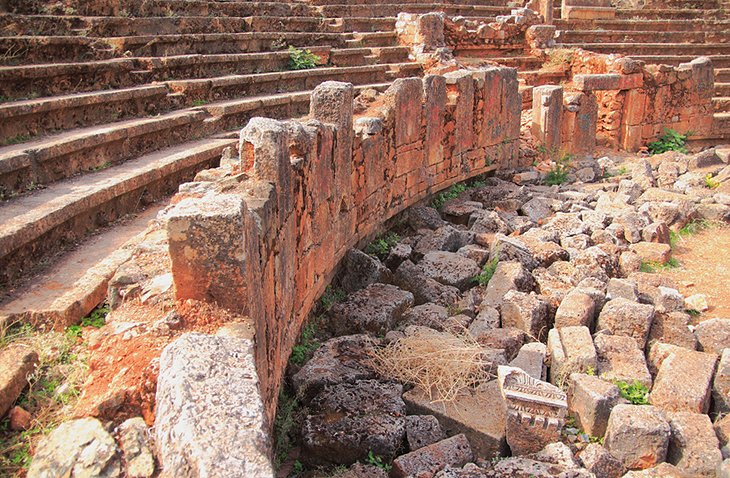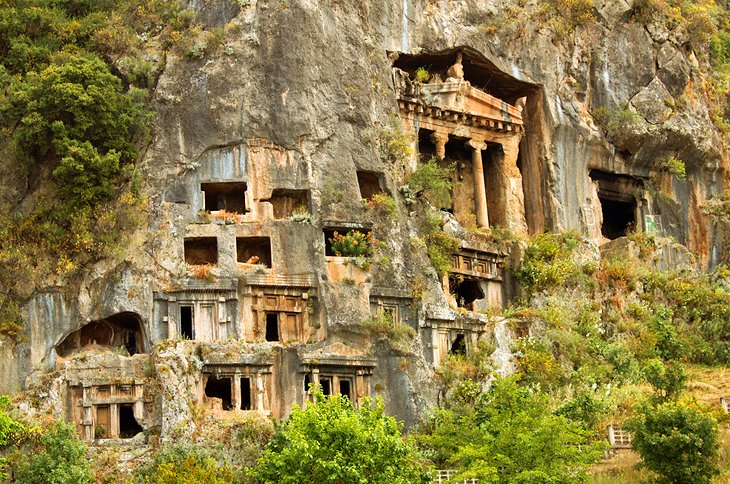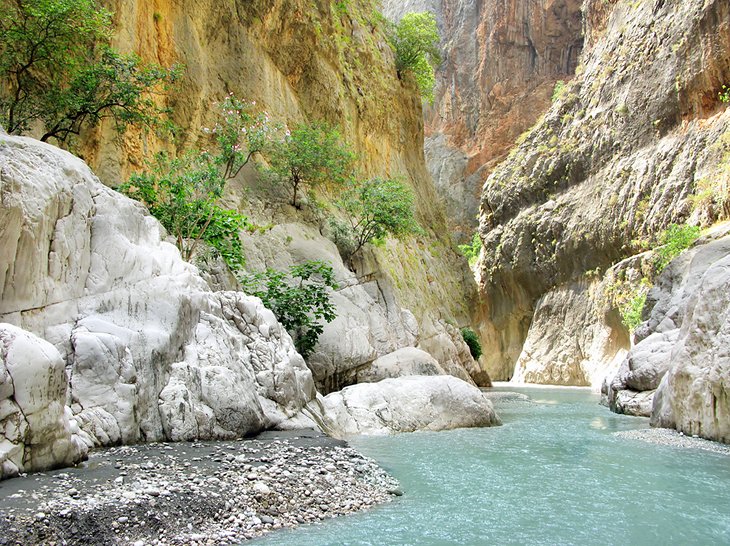General Information About Fethiye
Fethiye is a well known province of Mugla city. It is located on the Mediterranean coast of Turkey, 50 Km away from Dalaman airport. Fethiye is located on the old ancient city of "Telmessos" which you can see the ruins and theatre in the town. Town is popular with tourism and its amazing nature. Population of the Fethiye is around 115,000 and gets busy at summer season.
In an legend "Telmessos" is described as the name of the son of God Apollo. He fells in love with the daughter of the King Agenor, the king of Phoenicia. He turns his self in to a small dog and gains the love of the withdrawn, shy daughter. Then appears as a handsome man and have the son named "Telmessos" which means "Land of the Lights"

The city became part of the Persian Empire 547 BC. "Telmessos" joined the "Attic Delos Union" established in 5th century BC. Later city left the union and became an independent city, continued its relations with the union until the 4th century BC.
Fethiye grew fast in the 19th century, and had a large population of Greek citizens. During the exchange between Greece and Turkey, the Greeks were sent to Greece and the town was settled with Turks came from Greece. The modern name "Fethiye" was given to the town in honor of Fethi Bey who was the one of the first pilots of the Ottoman Air Force died in a mission.
Nowadays Fethiye is a tourist town with its international atmosphere. There are 3 marinas in the town serves to international and local visitors and cruise ships. Town has everything that a tourist looks for. Delicious restaurants, great night life, history and nature, amazing bays, traditional markets and shops, daily excursions and activities and it is probably the only city in the world where you will find sarcophagus and lots of temples and ruins in the streets.
Kayakoy
 Up until the 1920s, Kayaköy (ancient Karmylassos), eight kilometers from Fethiye, had a thriving mixed population of Greeks and Turks who had lived together for centuries. The 1923 Population Exchange changed all of that, uprooting ethnic Greeks across Turkey and sending them to live in Greece and making ethnic Turks who lived in Greece abandon their lives there. The exchange created heartbreak and much trauma among those who were made to leave, and the somber results of this are no better seen than in Kayaköy.
Up until the 1920s, Kayaköy (ancient Karmylassos), eight kilometers from Fethiye, had a thriving mixed population of Greeks and Turks who had lived together for centuries. The 1923 Population Exchange changed all of that, uprooting ethnic Greeks across Turkey and sending them to live in Greece and making ethnic Turks who lived in Greece abandon their lives there. The exchange created heartbreak and much trauma among those who were made to leave, and the somber results of this are no better seen than in Kayaköy.The dilapidated, eerie stone village that snakes across the hillside here has been left to slowly decay since its Greek owners said goodbye. Among the ruins is the Katapongagia Church and Taxiarchis Church, which both still have some beautiful interior decoration.
12 Islands Daily Boat Tour
The best activity on a holiday is to take a boat and cruise through different spots and islands of the area so 12 İslands boat tour is the best choice for you.
Oludeniz
The white sand beaches and turquoise waters of Ölüdeniz make for one of the most breathtaking natural spots to see – or swim in! – anywhere in the world. Paragliding over this stunning sight allows you to see it in all its glory. You’ll see every inch of the famous blue lagoon, and given that there are very rarely many clouds in the sky, the views for miles over the Mediterranean are almost always stunning.
.jpg)
Fethiye Museum
As Fethiye is the starting point of the Lycian Way and a central point for so many ancient cities, it’s no surprise that its museum has many incredible artifacts from the Persians, Greeks and Romans.
.jpg)
Butterfly Valley
Hundreds of species of butterfly make this cove their home. It’s only accessible by boat, and the beach and steep cliffs overlooking it are simply unbelievable.

Lycian Sites
The Lycians ruled over this stretch of Turkey's coast from 200 BC, and Fethiye stands on the site of the important Lycian city of Telmessos. There are plenty of monuments scattered throughout the city, but the most famous is the rock-cut Tomb of Amyntas in the south of Fethiye. On Kaya Caddesi, as you walk up the hill towards the tomb, you can see Lycian sarcophagi along the way. More Lycian sarcophagi are also by the town hall in the city center.
Lycian Sites
Roman Theater
When the Romans conquered Turkey, they allowed the independently minded Lycians self-rule, but that didn't stop them making their own mark on the Lycian cities. Fethiye's small and only partially excavated theater was built in the 2nd century BC, when Telmessos had become part of Rome's Asia Minor dominion. It would have originally seated 6,000 spectators.
Climb up to the top tier of seating for great views across town and over the sea beyond. The park opposite the theater is a good place to relax and seek some shade on a summer's day.

Roman Theater
Saklikent Gorge
This ravine, 30 kilometers from Fethiye, is cut deeply into the mountains of the Akdaglar Range. Most visitors come to trek the gorge, which has wooden boardwalks along part of the trail high above the river. The last section of the trail is reached by fording the swift-running river itself and then walking through the narrow fissure to the end. Cushion-strewn tea houses are beside the river here if you don't fancy walking through the freezing cold water. There are also canyoning and rafting trips along the river for the more actively inclined visitor.
This Saklikent Gorge 4x4 Safari tour is a great way to pack a bunch of the Fethiye area's key attractions into one day. In a full day of activities, you'll hike through Saklikent Gorge, have lunch by the river, and then travel on to Patara beach for a spot of swimming, and visit the ruins of Tlos afterwards. It includes all transport, including pickup and drop-off from your hotel..




0 التعليقات:
إرسال تعليق